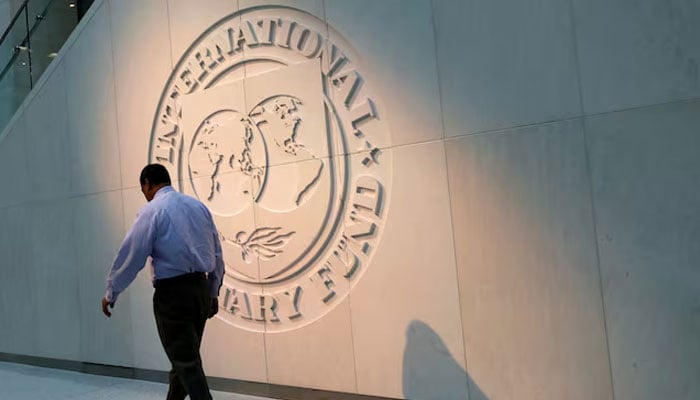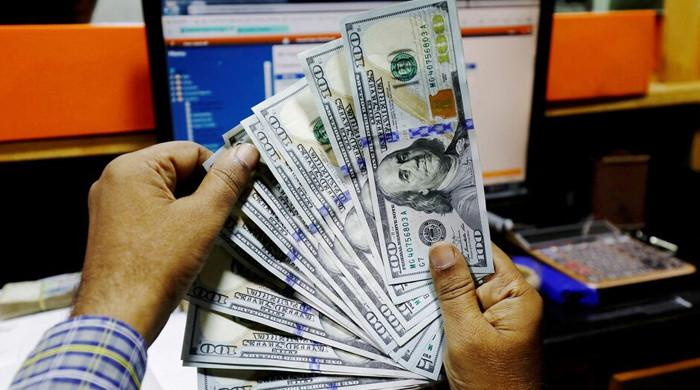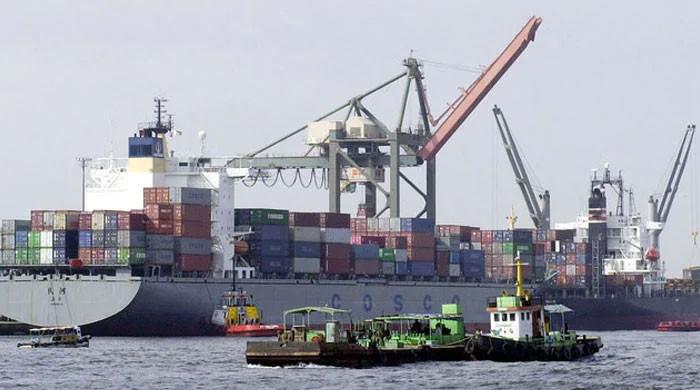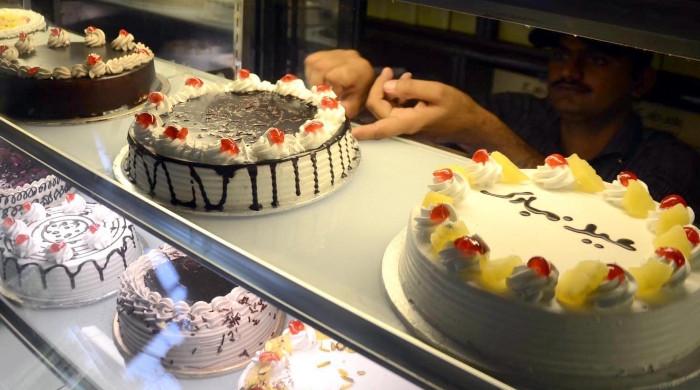Loaded with taxes, budget to rake in additional Rs3.8tr under IMF diktat
New raise in taxes would fetch additional revenues of Rs3.8 trillion in line with IMF demands
June 13, 2024

- Govt heavily raises direct, indirect taxes to historic high.
- FBR proposes ban on foreign traveling of non-filers.
- 18% sales tax imposed on mobile phones under $500.
ISLAMABAD: The government has heavily raised both direct and indirect taxes to a historic high in the budget, showing that loan deal with the International Monetary Fund (IMF) to bail out Pakistan’s economy outweighs the relief direly needed by the inflation-broken masses, whose incomes have hit rock-bottom in recent years.
The new raise in taxes would fetch additional revenues of Rs3.8 trillion in line with the IMF demands.
The government has jacked up taxes on salaried, non-salaried class, real estate, retailers, vehicles, removed GST exemptions and slapped taxes on milk and milk products, mobile phones, tier-1 retailers of branded stores at 18%, poultry feed, tractors, medicines, diagnostic kits, Federal Excise Duty on cement from Rs2 kg to Rs3 kg, filter rods of cigarettes, sugar’s commercial supply at Rs15 per kg, newsprint 10% tax, imported personal computer 10%, tax on stationery items and many others items.
The government has imposed a sales tax on cellular phones of 18% for not exceeding $500 and 25% for exceeding the $500 limit.
At present, persons deriving income from exports, have to pay a 1% tax on their export proceeds which is the final tax. On the principle of horizontal equity that taxpayers with equal income should pay equal tax, it is proposed income from exports be subjected to normal rates with 1% tax collection on their export proceeds be treated as minimum tax.
To penalise non-filers, the rate for non-filers for dealers, distributors, and wholesalers is being enhanced from 0.2% to 2% and for retailer non-filers from 1% to 2.5%.
The Federal Board of Revenue (FBR) also proposed slapping a ban on foreign traveling of non-filers.
The government proposed a new category of late filers for selling and purchasing real estate plots as their rate is proposed on the higher side in the range of 6% to 8%.
The rate of non-filers in the case of selling and purchasing plots was increased up to 12%, 14%, and 16% under the name of progressive taxation depending upon the value of the transaction.
The rate of Capital Gains Tax is imposed at 15% for filers for real estate and 45% for non-filers irrespective of any period while the same rate would be applied for stocks gains.
To display FBR’s annual tax collection target of Rs12.97 trillion in the next fiscal year, the revenue collector claimed that it is going to fetch Rs2 trillion through nominal growth and collection out of stuck-up revenues cases into superior courts while the remaining Rs1.761 trillion will be fetched in the shape of additional taxation and enforcement measures.
Out of additional taxation measures of Rs1.761 trillion, the FBR will slap additional taxes of Rs443 billion in the shape of income tax, jacking up rates of salaried and non-salaried classes — under Personal Income Tax (PIT) Rs224 billion, removal of GST exemptions and slapping GST Rs485 billion, Federal Excise Duty (FED) Rs289 billion and Customs Duty Rs700 billion.
Through enforcement measures and digitisation, the FBR wants additional collection of Rs250 billion in the next budget.
However, FBR Chairman Amjad Zubair Taiwana claimed, while talking to journalists in technical briefing here at the FBR on Wednesday night, that there was pressure for increasing the GST standard rate from 18% to 19% but they did not increase it.
The tax rates for non-salaried individuals and associations of persons and salaried individuals have changed. The limit of taxable ceiling has been kept unchanged at Rs600,000.
Beyond this threshold, tax rates for non-salaried individuals have five taxable slabs with progressive tax rates ranging from 15% to 45%.
For salaried individuals, beyond the threshold of Rs600,000 per annum, there are five taxable slabs ranging from 5% to 35%.
At present, non-filers are subjected to higher tax rates to make their cost of doing business higher as well as to compel them to file their returns.
Now a new tax rate for a new category of persons who are late filers i.e. they become filers after the due date of filing of return only for the sake of a specific transaction to avoid higher rates for non-filers. For such late filers a new tax rate is being introduced which is higher rate as compared to filers but lower than the non-filers.
Income Tax on Immovable Properties: Progressive tax rates on purchases and sales of properties, categorised into three categories, namely, filers, late-filers and non-filers.
On purchase of property by filers, the rates of tax would be 3% for values of properties up to Rs50 million, 3.5% for values of properties between Rs50 million and Rs100 million, and 4% for value of properties above Rs100 million.
Late-filers would face slightly higher rates: 6%, 7%, and 8% respectively for the same property value brackets. Non-filers would experience significantly higher rates, set at 12% for properties up to Rs50 million, 16% for Rs50 million to Rs100 million, and 20% for exceeding Rs100 million.
The proposed progressive advance tax rates at source for filers on sale of immovable property are 3% for properties valued up to Rs50 million.
For properties valued between Rs50 million and Rs100 million, the withholding tax rate is 4%, and for properties valued above Rs100 million, the rate is 5%. For non-filers, the rate is 10% for properties of any value.
Further, for late filers, the rate of tax will be 6%, 7%and 8% respectively depending on the value of property.
A flat 15% rate of tax on gains from the disposal of immovable property acquired on or after July 1, 2024 by filers regardless of the holding period is proposed, and for non-filers, progressive tax rates based on the prescribed slab rates with a minimum tax rate of 15% is proposed.
At present, capital gains on sale of securities is taxed on the basis of holding period with maximum rate at 15% and no tax if the holding period exceeds six years.
Now, for the securities acquired on or after July 1, 2024, the capital gain on sale of such securities will be taxed at flat rate of 15% for filers, and for non-filers, the gain will be taxed at normal rates with minimum rate of 15% and maximum rate of 45%.
Further capital gains income from mutual funds and collective investment schemes is also enhanced from 10% to 15%.
Advance tax rate on profit on debt for non-filers is being enhanced from 30% to 35% to increase cost of non-compliance.
The prices of motor vehicles have substantially increased, therefore in order to capture true potential of tax it is proposed that basis of tax collection may be changed from engine capacity to percentage of value in cases of all motor vehicles.
Moreover, it is also proposed that percentage of tax collection may also be increased in cases of vehicles having engine capacity of more than 2,000cc.
Five years exemption from tax on income and from withholding taxes with effect from July 1, 2018 was provided to Fata/Pata up to June 30, 2023 which was extended for one year up to June 30, 2024. It is proposed that further exemption from income and withholding taxes may be extended for another one year up to June 30, 2025.
The FBR imposed FED on acetate tow at the rate of Rs44,000, imposition of FED on nicotine pouches at Rs1,200 per kg, enhancement of FED on e-liquids is also proposed, Rs15 per kg on supply of sugar to manufacturers.
The rate of FED on cement is being enhanced from Rs2 per kg to Rs3 per kg, FED on commercial properties and first sale of residential properties at 5%, rate of FED on filter rod to be enhanced from Rs1,500 per kg to Rs80,000 per kg. Business premises of retailers selling illicit cigarettes would be sealed.
The FBR proposed exemption from FED to diplomats and diplomatic missions and price threshold for local manufactured cigarettes increased from Rs9,000 to Rs12,500 in order to overcome dead zone for launching new brand within the tier-2 cigarettes.
In the finance bill, the federal government has also decided to increase the maximum petroleum levy by Rs20 to Rs80 per unit on High-speed diesel oil and Motor gasoline for the next fiscal year. The petroleum levy during the outgoing fiscal year (FY24) stood at Rs60 per liter.
Additionally, the maximum levy on Light Diesel Oil (LDO), and High Octane blending Component (HOBC) is also raised to Rs75 per liter, respectively.
On the other hand, the levy on kerosene oil remains at Rs50 per liter, and for liquefied petroleum gas, it stands at Rs30,000 per metric ton.
Originally published in The News











